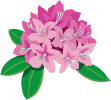Takoma Horticultural Club
A hardy perennial since 1916
Menu
IX. Benjamin Y. Morrison – Most Renowned Member
This is installment nine of a series giving glimpses of the Takoma Horticultural Club at various times during its history, drawn from a collection of newsletters, reports, ledgers and other materials made available through the help of Diana Kohn and Historic Takoma Inc. In this episode we commemorate Benjamin Y. Morrison, perhaps THC’s most renowned member.
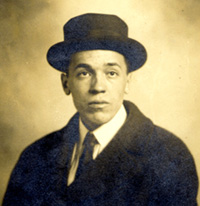
This year marks not only the 100th anniversary of THC, but also 50 years since the death of Benjamin Yeo (B.Y.) Morrison (1891 – 1966), a remarkable member of THC. The son of founding member Lisle Morrison, B.Y. joined THC when he began work at the USDA’s Office of Plant Introduction and Exploration in Glenn Dale, MD, after serving in the Army in World War I in the Camp Planning Division of the War Department. In 1926, he became THC’s 10th president and in the United Kingdom awarded the Peter Barr (the 19th century horticulturalist credited with promoting daffodils in the UK) Memorial Cup to him.
His most prominent plant breeding efforts were the Glenn Dale hybrid azaleas. Starting in the late 1920’s, Morrison worked for over 25 years to create these winter-hardy azaleas with large, colorful flowers suitable for the Washington, DC region. The program produced 454 new azalea cultivars, which were distributed from 1942 through 1954 to nursery growers, gardens and individuals across the US—and in Takoma Park and environs by Morrison himself, friends, and THC members. Legend has it that after the Glenn Dale station was directed to grow plants exclusively for the war effort, Morrison moved the azaleas to his yard in Takoma Park and walked the streets with a wheelbarrow full of seedlings to give to willing gardeners. THC has also donated Glenn Dale azaleas to parks in Takoma Park to replace those lost over the decades. At the US National Arboretum, the Glenn Dale Hillside was planted with 10,000 unnamed Glenn Dale hybrids from 1946 to 1948, and the formal Morrison Garden serves as the hub of the azalea collection.iii Ironically, B.Y. Morrison Park in Takoma Park has almost no azaleas.
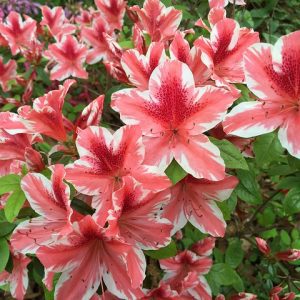
Photo: Judy Casey
In 1965, he was made Honorary President. THC named the year 1966—the club’s 50th anniversary—“the year of Morrison.”
Well known for his development and introduction of the Glenn Dale hybrid azaleas as well as for serving as the first director of the US National Arboretum, Morrison also made many other lesser- known contributions to horticulture and the arts. Irises were his earliest venture in plant breeding. While studying at Harvard, Grace Sturtevant, known as “America’s first lady of iris,” encouraged Morrison to breed irises and introduced his seedlings in her catalogue. (Sturtevant also named one of her early award-winning seedlings “B.Y. Morrison.”) Morrison went on to be an early officer of the American Iris Society and later served as the editor of its bulletin for many years. Daffodils closely followed the irises. Morrison was said to have “done more than any other person to make the modern daffodils known and loved in many sections of this country.”i Unlike his work with azaleas, his daffodil introduction and hybridization efforts largely took place in his garden on Piney Branch Road in Takoma Park, where many people came to admire his new cultivars. He brought his passion for the flower to THC, which formed a 15-member Narcissus Committee. The Committee’s conscientious attempts at cross-breeding more than 400 varieties are documented in the 100+ page “1926 Report of the Narcissus Committee” in the THC archives.ii Morrison lectured widely and corresponded with thousands about his “beloved flower.” He also edited four American Daffodil Yearbooks for the American Horticultural Society.
The conceptualization and planning of the National Arboretum are also among Morrison’s notable achievements. From 1937 to 1948, under the title of Acting Director, he designed the different areas of the property, laid out the roads, decided upon the places for the future headquarters building, the library, herbarium and greenhouses, and began the construction and the planting of the more important botanical and horticultural collections. He was officially named as Director in 1948, shortly before his retirement from USDA.iv
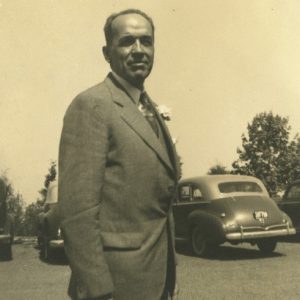
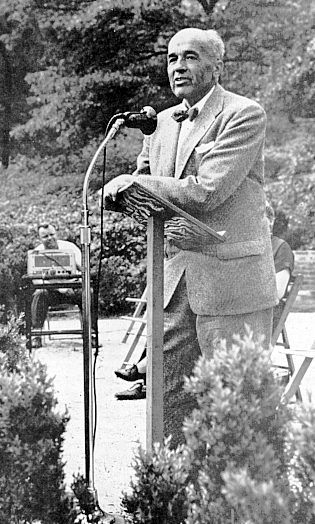
Morrison’s abilities were not limited to horticulture and landscaping. He was also a skilled writer, editor, artist and musician. For 37 years—beginning in 1926 and ending in 1964, long after he retired and left Takoma Park for Mississippi—he applied these abilities to create the unique style and format of the National Horticultural Magazine (now the American Gardener) of the American Horticultural Society in his volunteer position as Chairman of the Editorial Committee. The prints he created for the covers were the magazine’s early hallmark and continued until 1954.v For several years during the World War II period, Morrison served as both president of AHS and editor of the magazine, in addition to his job as Acting Director of the Arboretum. The AHS called him the “guiding spirit of the organization during and after World War II.” Today, the AHS confers the annual B.Y. Morrison Communication Award, recognizing “effective and inspirational communication— through print, radio, television, and/or online media—that advances public interest and participation in horticulture.” vi
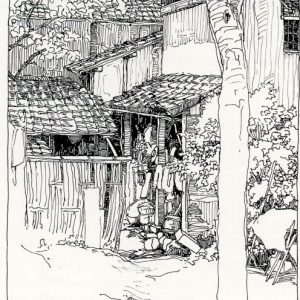
Further evidence of his artistic talents can be found at the Hunt Institute for Botanical Documentation of Carnegie Mellon University in Pittsburgh. There, 39 pen-and-ink and watercolor illustrations of grasses, irises, daffodils, and more are in the Art Department. However, the Archives of the Hunt Institute contain the “jewels” of his collection: sketchbooks and drawings in various media of Chinese and Japanese gardens and other scenes he encountered in his travels. Seven boxes of his correspondence, manuscripts, and other writings are also part of the archives.vii
In the musical arts, he composed an opera libretto and gave professional lieder concerts (a 19th century form of German-language sung poetry with a soloist and piano). His friend wrote that he was offered an opportunity to try out for the Metropolitan Opera.viii
It is no surprise that a colleague at the USDA said of him in 1931: “The fairies that stood sponsor at the birth of B. Y. Morrison must have been in doubt as to what special gift they should bestow upon him, so to give him a choice they placed within his reach Art, Music, Literature, and Science, whereupon he grasped them all and refused to part with any of them, but the feature of this many-sidedness which is of greatest interest to us is his love of flowers and his interest in plants.” ix
—Nancy Newton
Notes
i, ii Wister, J. C. BENJAMIN YEO MORRISON, Royal Horticultural Society, Daffodil and Tulip Yearbook 1963.
For example, one member successfully crossed King Alfred with Crimson Braid to produce Marmaduke, which the nursery trade picked up as a named variety. On the other hand, King Alfred crossed with Loveliness failed to produce seed.
iii Wister, J. C. BENJAMIN YEO MORRISON, Royal Horticultural Society, Daffodil and Tulip Yearbook 1963.
iv Rhododendron Glenn Dale Hybrid Azaleas. U.S. National Arboretum Plant Introduction, Floral and Nursery Plants Research Unit. 2008.
Harrowood Books, Newtown Square, Pennsylvania, 1978.
v
vi
vii
viii
ix J. Marion Shull, Rainbow Fragments, Doubleday, Doran & Company, Inc., New York, 1931, page 116, cited in Wister, J. C. BENJAMIN YEO MORRISON, Royal Horticultural Society, Daffodil and Tulip Yearbook 1963.
